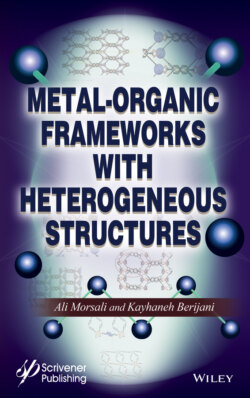Читать книгу Metal-Organic Frameworks with Heterogeneous Structures - Группа авторов - Страница 13
Оглавление
Preface
The study of metal-organic frameworks (MOFs) as porous crystalline materials has risen rapidly over recent years due to their unique properties and various potential applications. Until now, thousands of MOFs have been prepared with wonderful new designs and further precision in the synthesis methods.
As known, MOFs chemistry is started with the main two components: inorganic and organic units. But, it is of interest to know that most of them have homogeneous structure with having one of each kind of component. Recently, MOFs with heterogeneous structures have been attracting strong attention due to their interesting structure and features. These kinds of materials in their body have more kinds of components that lead to structural complexities. The understanding of effective agents in the production of MOFs with heterogeneous structures is another key and important concept that is not easy. Given that how these kinds of heterogeneous porous MOFs are constructed is attractive, so, in this book, we focus on advances in research on MOFs with heterogeneous structures covering mixed components (metals/ligands), multi-heterotopic linkers, defect, heterogeneous pores, mixed MOFs, and, most importantly, chiral MOFs along with some examples. These different cases lead to diversity of parent architectures, and finally, the complexity and heterogeneity appear in them. Many reports have been presented about different kinds of MOFs but some of them are very complex therefore the attempt to their understanding should be increased. This book can help further understanding of these kinds of MOFs.
Ali Morsali and Kayhaneh Berijani Department of Chemistry, Tarbiat Modares UniversityTehran, Islamic Republic of Iran July 2021
